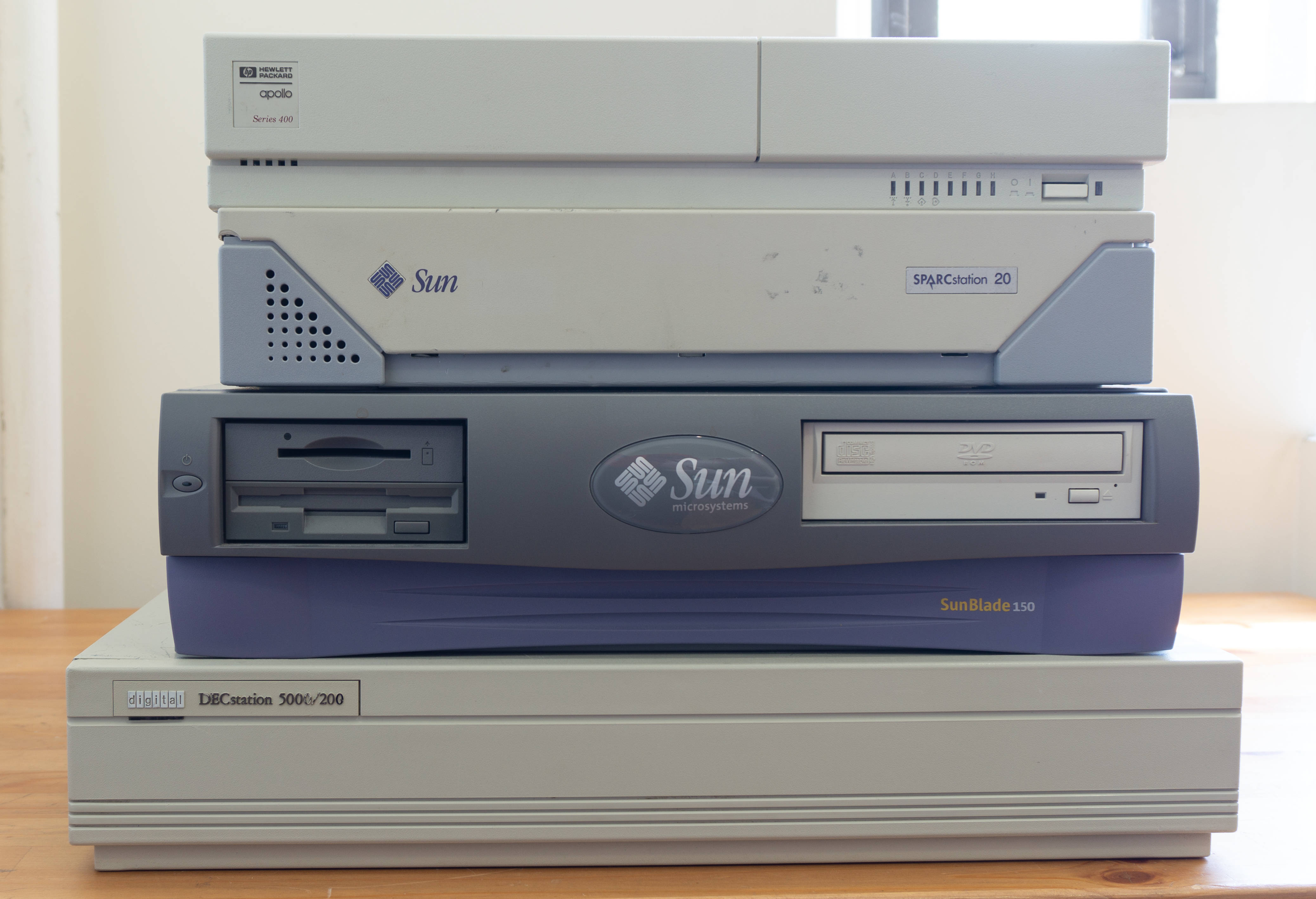Filling in more cracks
I haven’t been writing super frequently over the past few months, so I’ve missed introducing a couple of the newest additions to my collection. They’re all from manufacturers that I already have some boxes from, but represent different eras and technology than the boxes I already had.
A couple of SPARCs
The middle two pizzaboxes in the picture are SPARC boxes from Sun. The more elderly one is the SPARCstation 20. The 20 is the most high-end 32-bit workstation Sun ever made - its successors were the 64-bit “Ultra” series. Unlike the single-digit SPARCstations (1, 2, 4, 5), the double-digit SPARCstations (10, 20) have swappable processor cards (called “MBus” cards) and support multiple processors. Mine has two 60MHz SuperSPARC processors! This one came to me from someone cleaning up old gear on the ClassicCmp mailing list. A kind soul who lived nearby picked up all the gear, cobbled together a few broken SS20s in to a working one, and sent it to me!
The other one is a SunBlade 150. It’s a bit of a stretch of my definition of a “pizzabox” - it’s 118mm tall, 18mm more than my arbitrary threshold. I bent the rules because (if we allow for larger boxes) this is the last Sun pizzabox ever made. It certainly sold more units than the only newer pizzabox model I’m aware of, the HP AlphaStation DS15 (the SunBlade was introduced in late 2002, the AlphaStation in late 2003). Where most of my pizzaboxes have SCSI hard disks, proprietary expansion slots, custom peripheral buses, and advanced framebuffers, the SunBlade 150 uses IDE, PCI, USB, and an ATI Rage XL - it’s practically a contemporary PC with a SPARC processor!
Another DEC architecture
The DECstation 5000 / 200 was a heck of a find - when I saw it listed on eBay along with its original external SCSI enclosure, a DEC keyboard and mouse, some drives, and lots of cables, I had to snap it up before anyone else did! There seems to be not that many of these left - it’s a generation of workstations that even DEC soon abandoned. As DECs competitors were all working on their own RISC processors, DEC hedged their bet on the CISC VAX architecture by building the DECstation series of MIPS-based computers. They typically ran Ultrix, the same Unix that DEC sold for VAXen. A few years later, DEC introduced their own RISC architecture, the Alpha, and a new Unix (OSF/1).
Motorola-powered HP 9000
The final box in this crop is the HP 9000 Model 425e - one of their final m68k-powered boxes (sold concurrently with the introduction of PA-RISC). I’m excited to be able to compare it with the Model 712. Many manufacturers switched from m68k to some sort of RISC architecture in the late 1980s/early 1990s, but the m68k boxes are often hard to find. If I get a chance, I’d love to write an app on the 425e and then port it to the 712 - I have some “porting guide” documentation lying around!
